Twelve years after the 2011 uprisings and subsequent civil war began, Syrian President Bashar al-Assad has kept his hold on power through a strategy of civilian targeting, siege tactics, and countless other war crimes. At least 350,000 civilians have been killed and the majority of the country’s population has been displaced, including over 6.8 million as refugees. Yet even as refugees have built new lives abroad, most Syrians in Turkey, Lebanon, and Jordan — the main regional hosting countries — are economically and sociopolitically marginalized to different degrees. The poverty rate for refugees in the region is over 70% and is being aggravated by worsening domestic economic crises. Politicization of the refugee presence in each country has left many Syrians with tenuous legal statuses and prevented permanent integration. Efforts by the Assad regime to normalize regional diplomatic relations — accelerated after the devastating February 6 Turkey-Syria earthquakes — are raising fears of mass forced refugee returns.
In Lebanon and Turkey, in particular, Syrians face both increasingly hostile government policies and growing anti-refugee public opinion. Turkey’s opposition parties have long made sending back Syrian refugees a key component of their agendas and are stoking popular anti-Syrian sentiment ahead of the May 14 presidential election. President Recep Tayyip Erdoğan has discarded his government’s formerly friendly rhetoric, vowing in 2022 to send back one million refugees to northern Syria. In Lebanon, Syrians have faced a rise in arbitrary deportations — including raids last month by the Lebanese army.
But even facing increased discrimination, more than 70% of Syrian refugees do not intend to return to Syria within the next five years — for the main reason that many cannot safely return home. As Syrian displacement stretches into its thirteenth year, donors, host countries, and civil society organizations need to think creatively to avoid the long-term human, development, and security consequences of marginalizing Syrian refugees in the Middle East.
Current policies toward Syrians
At the start of the civil war, neighboring countries opened their doors to Syrians fleeing increased violence. Local communities, international actors, and host governments navigated meeting the needs of the millions of newly displaced and expanding public services. While Lebanon’s government has been relatively hostile toward Syrians since the start, Turkey and Jordan implemented initiatives to enable refugee labor market participation and expand services, and Turkey granted citizenship to over 200,000 refugees. Today, however, Syria’s neighbors have sharply different policies and rhetoric toward refugees. The common factor is that refugees’ economic and sociopolitical situation is worsening, not improving.
The policy environment for refugees in Jordan has been comparatively more welcoming, due in part to the country’s strong Western ties. Jordan has enacted long-term programs such as the 2016 Jordan Compact that provide work permits and expanded access to education for the more than 660,000 registered Syrian refugees in exchange for international support and economic concessions for Jordanian companies. However, Syrians in Jordan are restricted to specific occupations, and the Jordan Compact struggled to deliver on work permit targets and private sector growth. Policies on access to services such as healthcare have fluctuated, and aid has not translated into economic inclusion — over 80% of Jordan’s Syrian refugees outside of refugee camps fall below the poverty line.
Lebanon’s politicians have increasingly scapegoated the country’s over 800,000 refugees for the consequences of their own political gridlock and corruption. The government has repeatedly sought to mass repatriate Syrians — held back primarily by international pressure — and refugees face arbitrary deportations and deep socioeconomic exclusion. With the economy in free fall since 2019, 9 out of 10 Syrian refugees are impoverished, along with rapidly increasing poverty among Lebanese citizens. Some refugees have turned to TikTok for donations, facilitated by exploitative businessmen.
Finally, Turkey shelters over 3.4 million registered Syrian refugees and is the world’s largest refugee-hosting country. Erdoğan’s government initially welcomed refugees, providing free access to healthcare and education, though it enacted mobility restrictions that limit refugees to their province of registration. However, anti-refugee popular sentiment and political rhetoric against Syrians have gotten increasingly worse. The pandemic and broader economic crisis facing Turkey have pushed more refugees into poverty.
The earthquakes and Turkish elections have further complicated the future of Syrian refugees in Turkey and across the region. After the earthquakes, anti-refugee sentiment in Turkey manifested in a flood of social media rumors that Syrians were looting aid, leading to increased social tensions and discrimination against Syrians by government authorities.
The Assad regime has also utilized the earthquakes to broaden its normalization campaign with countries across the region. Both the Turkish government and opposition have emphasized normalization and mass refugee return during election campaigning, though Turkey’s control of parts of northern Syria and rebel support have stymied normalization efforts.
However, as polling of Syrians indicates, normalization will likely not translate into large-scale voluntary return given Syria’s ongoing violence, repression, and economic crisis. Jordan has progressively reengaged Syria since 2017, but few refugees have actually returned because of persistent insecurity. The Syrian government itself has appeared unwilling to accept refugees posing possible threats to its authority. Furthermore, while deportations are increasing across the region, mass forced return would violate international law and cause more Syrians to attempt to reach Europe — something that Europe and the United States do not want.
Instead, Syrians have become a semi-permanent economic, social, and political underclass in their hosting countries, unable to go home and met with increased exclusion in their displacement. This approach has dire human consequences — for the generation of refugee children with limited access to school, and for the mental health and economic futures of both Syrian families and their poorly supported host communities. The stability and security consequences will also be significant, particularly if Western countries focus primarily on border enforcement to prevent migration instead of supporting refugees and hosting countries.
Policy Solutions
The current strategy demands a serious rethink. First, a full transition to long-term approaches in aid and economic support of refugee-hosting countries is necessary. While stakeholders have called for development-oriented programming, particularly in protracted refugee situations, too often aid programs are reliant on short-term funding cycles implemented by international NGOs outside of host country systems.
Facilitating overall economic growth and both host community and refugee labor participation is also crucial. Building on the Jordan Compact, Brookings expert Kemal Kirişci has argued for a Turkey Compact to ensure refugees are included in reconstruction. He outlines an approach whereby trade concessions would be extended to Turkey by Western countries to incentivize business growth and job creation, particularly in sectors with high levels of refugee employment. Such models require learning from the mistakes of the Jordan Compact in excluding refugees and input from private sector stakeholders.
Second, there needs to be more engagement of local officials and civil society organizations who are the most equipped to support refugees in their communities. Municipal officials in Turkey, Lebanon, and Jordan are frontline actors and key to facilitating refugee inclusion locally, yet refugee response funding is often highly nationalized. Organizations have put forward concrete policy actions donors and host states can take to build on local capacity to mitigate tensions.
Third, the international community must fulfill the promises made of safe resettlement pathways for refugees as well as expand labor migration pathways. In 2021, only approximately 17,000 Syrians were resettled. Instead, more Syrians are taking dangerous smuggling routes. In 2022, asylum applications in the European Union from Syrians were the highest since 2016. Increasing resettlement for Syrians is also crucial as a signal that developed countries are willing to share responsibility in welcoming refugees. This increase is achievable — in the earthquakes’ aftermath, Spain offered expedited resettlement for refugees in the disaster zones, and the United States is ramping up resettlement after years of low admissions.
Matching refugees to labor needs and providing skills training could also help refugees access a wider range of labor visas in the Gulf and elsewhere. In the aftermath of the 1948 and 1967 Arab-Israeli wars, many Palestinian refugees in neighboring countries were able to work in the Gulf states. Palestinian refugees provided remittances for their families in Jordan, for example, and directly supported its economy. However, as the expulsion of hundreds of thousands of Palestinians following the 1990-91 Gulf War demonstrated, these visas often do not offer the long-term legal protection of refugee status.
Finally, vastly increased effort is needed to improve the economic, housing, and security situation in northern Syria for those refugees who do wish to return. Over 1.7 million individuals in northwestern Syria lived in camps before the earthquakes, and the destruction worsened an already-dire housing situation. Experts argued even prior to the earthquake that a reconstruction and development-centered approach needed to be adopted in northern Syria.
In 2019, 78% of refugees were displaced for longer than five years. Refugees become long-term members of communities whether they are met with supportive policies or not. Research shows that refugees contribute to local economies and attract international support for local development. However, without adequate support and socioeconomic inclusion, refugees can strain local economies and public service systems. Without a new approach, Syrian refugees and host communities in the Middle East face a grim future.
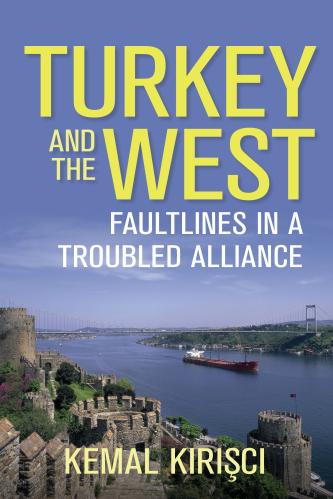

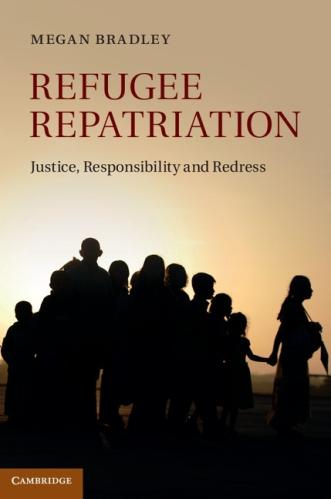
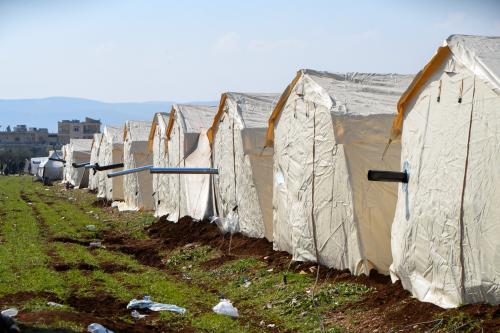
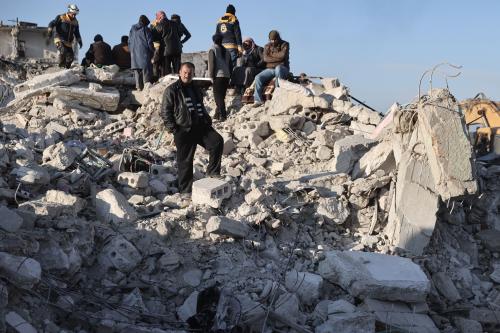
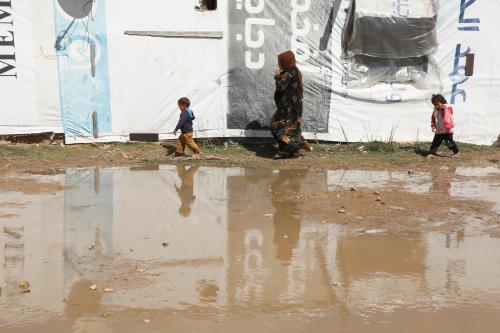

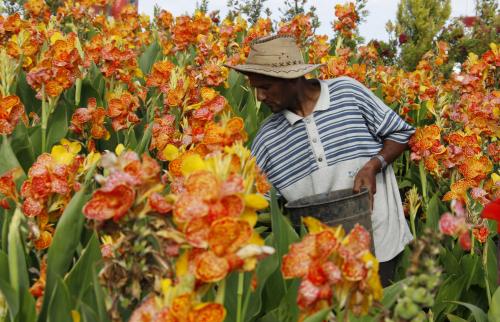
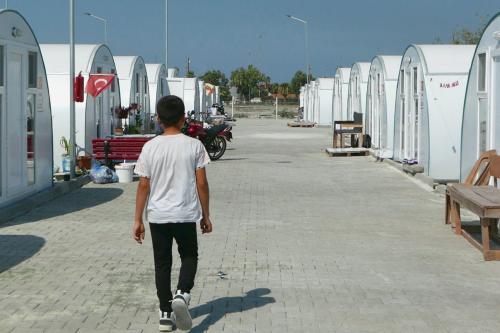
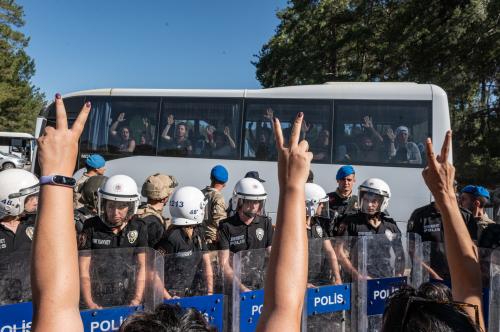
Commentary
Syrian refugees face a grim future without international policy shifts
May 2, 2023